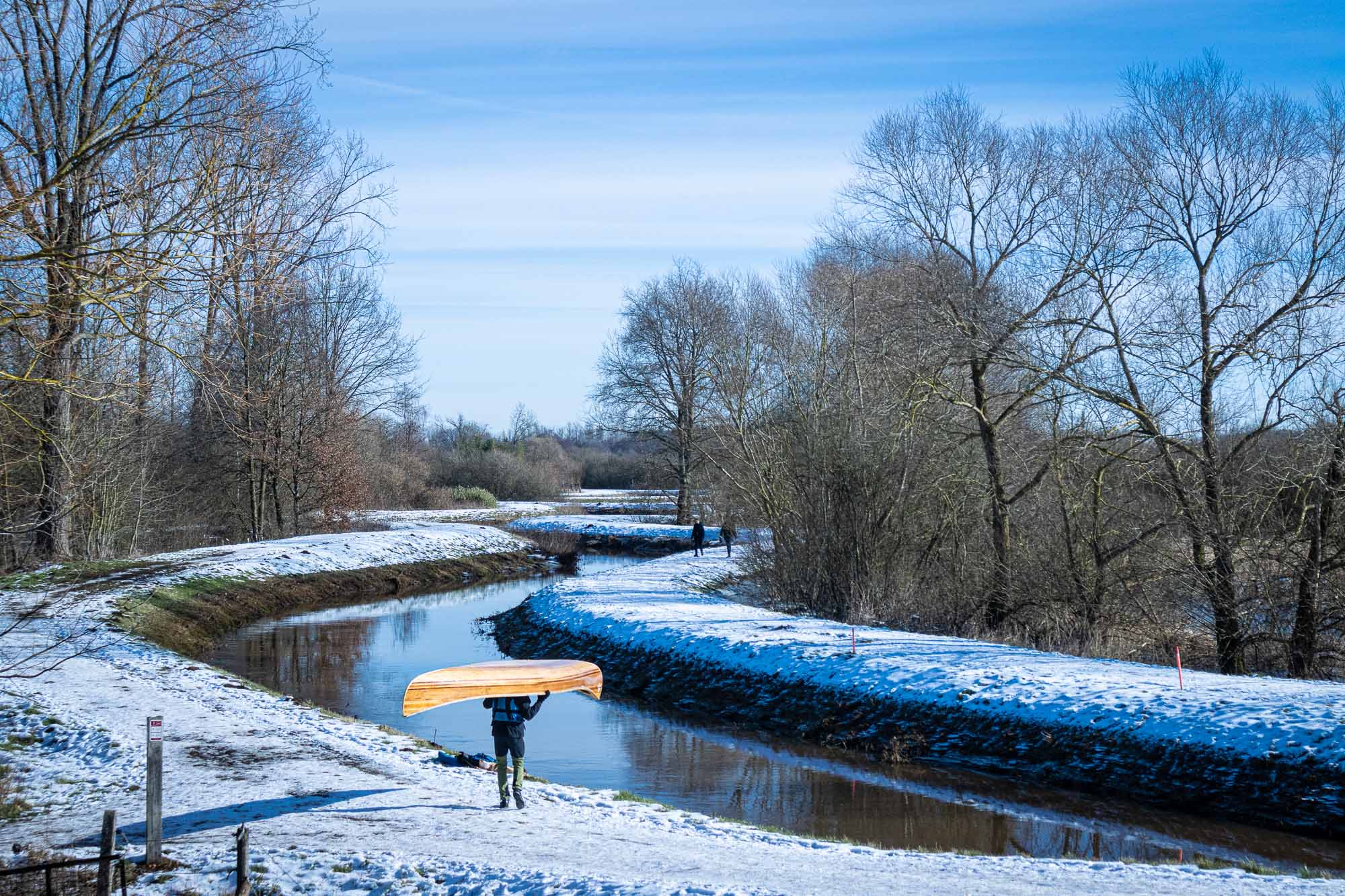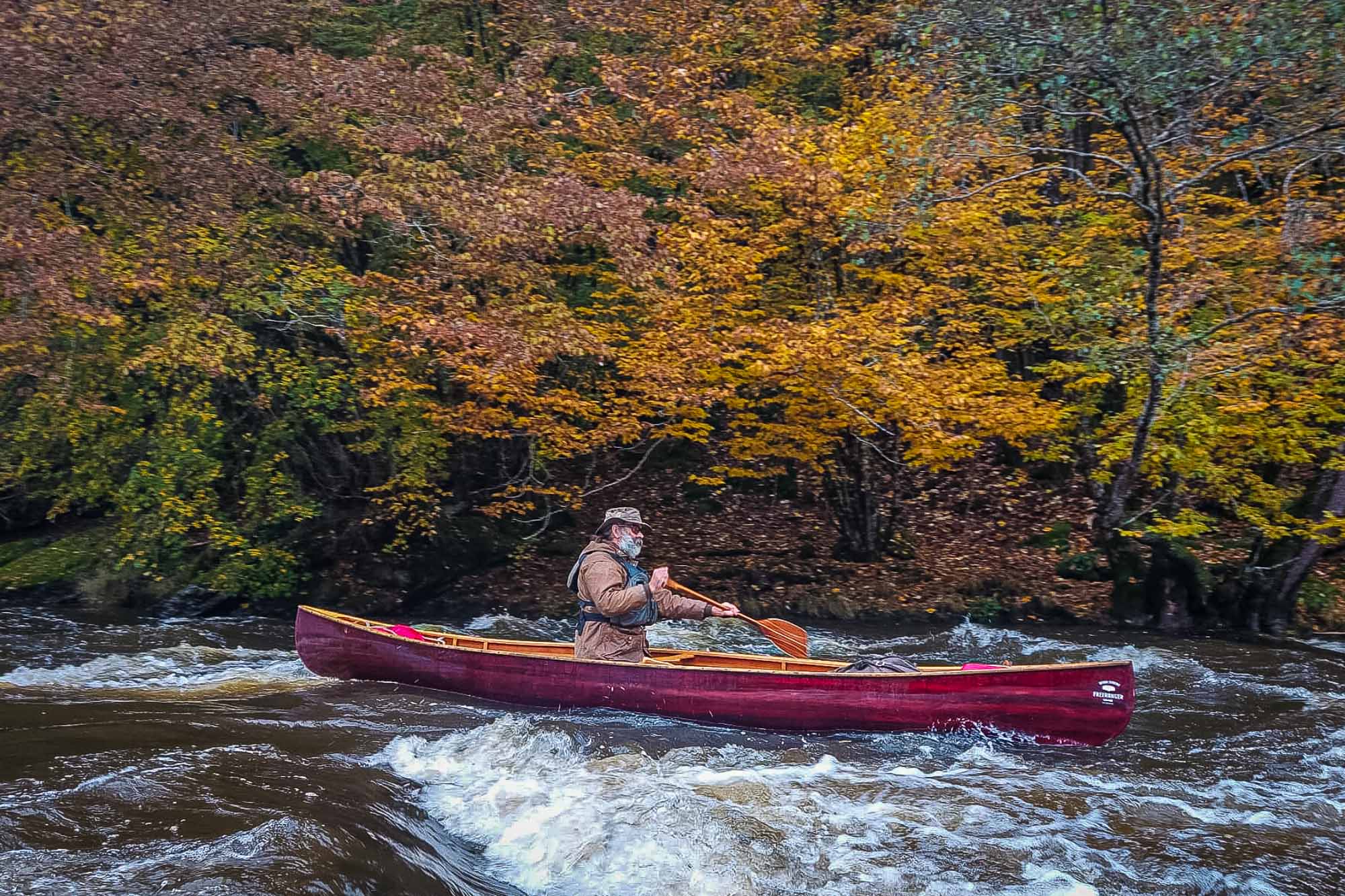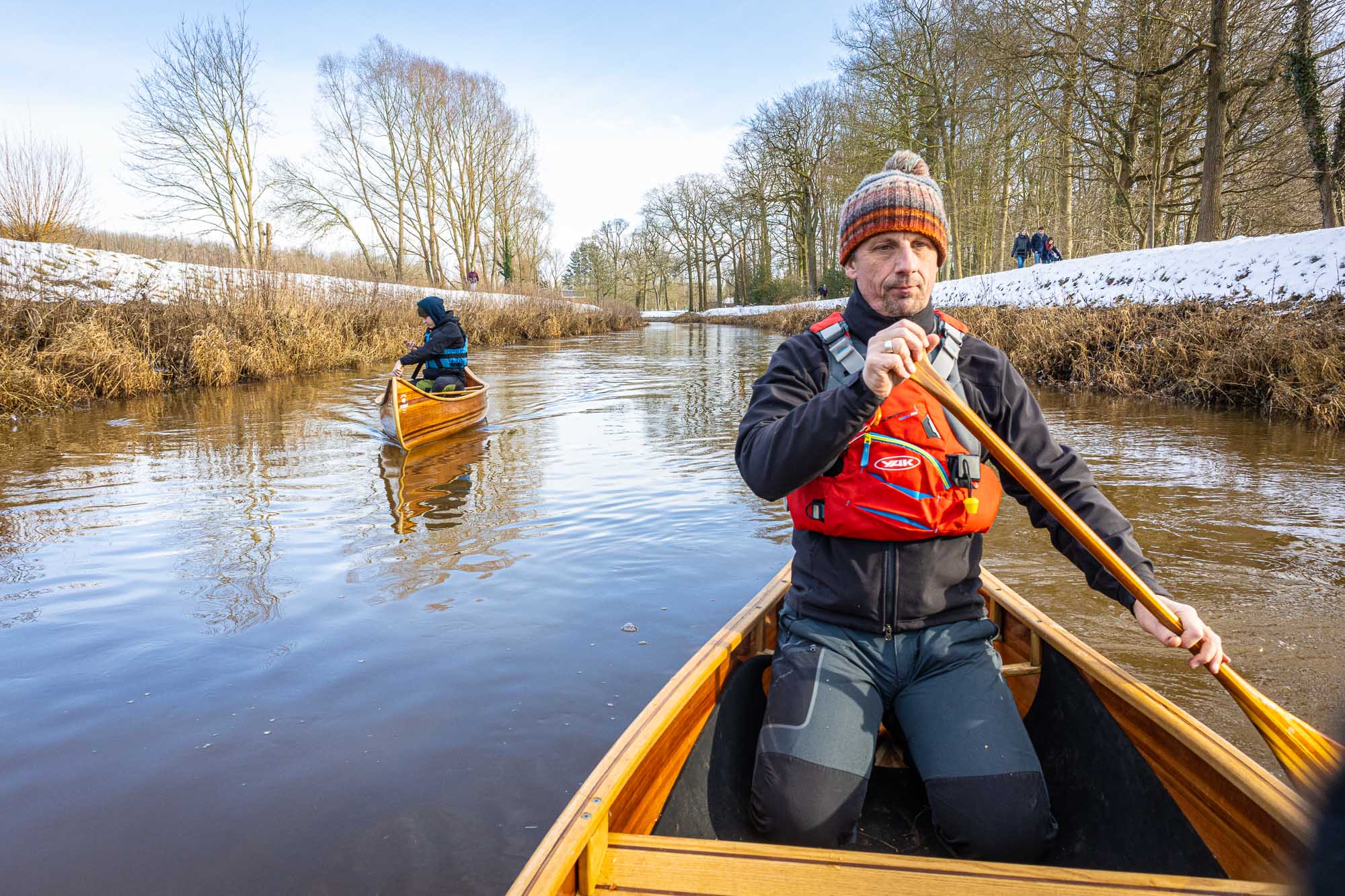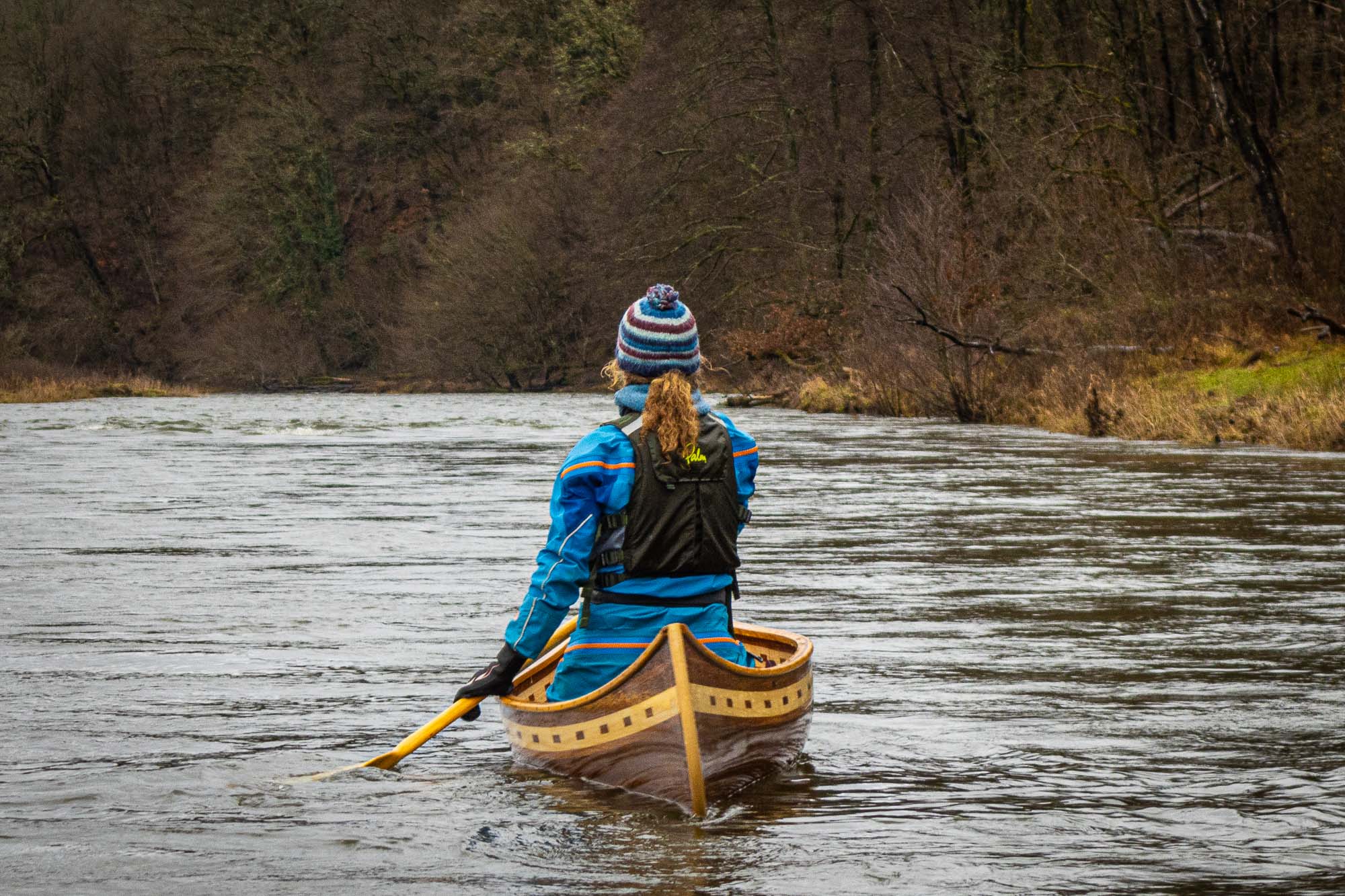Embracing the Chill, Winter Canoeing Adventures
Winter canoeing holds a unique charm often overlooked by many who assume canoes should be put away until spring. Contrary to this belief, some of the most rewarding paddling adventures unfold during the winter. Especially here in Belgium when the rain water fed rivers boast sufficient water levels. We, avid winter paddlers, appreciate the absence of hot weather and high humidity, opting for the period between October and April when algae and bacteria decrease, bugs dwindle, and water levels rise. However, embracing winter on the water demands precaution and careful planning for safety and comfort.

Plan Before you go Winter Canoeing
Preparation hinges on the type of water – rivers and creeks pose different challenges than open lakes. For river or creek paddling in the Ardennes, check flow levels (Environnement Wallonie). High flows can be perilous, while low flows might mean more walking than floating. Select your river and under the tab Informations you will find all the info about minimum and maximum levels and also the current level. If you are a novice or intermediate paddler stick to low or medium flows in cold weather to avoid dangers of high water.
For lake paddling, focus on weather forecasts, especially wind speed and thunderstorm chances. Winds over 3-4 Bft can challenge even experienced paddlers, while high winds create waves, chop, and cold wind. Monitor the day’s weather to assess conditions beyond just temperature.
Once weather and water conditions align, always have a paddle buddy, inform someone on shore of your plans, and never paddle alone – crucial, especially in winter emergencies.

Winter Canoeing: Make a Check List
Create a checklist for each trip, adjusting based on the duration. Include a grab bag with essentials for emergencies, ensuring quick access. Make sure you have a dry set of clothes in the bag as well as a first aid kit with an emergency blanket.

Winter Canoeing: 10 Tips to Gear Up for Safety and Comfort
- Dress appropriately: Wear moisture-wicking base layers to keep sweat away from the skin, insulating layers for warmth, and a waterproof and windproof outer layer to shield against the elements. Choose clothing made from synthetic or wool materials instead of cotton, which retains moisture and increases the risk of hypothermia. Keep hands, feet, and head warm with appropriate gear. Use waterproof gloves, insulated boots, and a head covering to prevent heat loss.
- Check Weather Conditions: Stay updated on weather forecasts, paying attention to wind speed and potential storms. Plan your canoeing trips on days with favorable conditions. Take into account wind chill. Wind chill is the perceived decrease in temperature felt by the human body as a result of the combination of actual air temperature and the wind speed. The wind chill factor is especially relevant during cold weather conditions.
- Know Water Temperatures (and Air Temperatures): Be aware of water temperatures and dress accordingly. Cold water can be dangerous, and immersion without proper gear can lead to rapid heat loss. Take into account the 30°C-rule. The rule suggests that the sum of the air temperature and the water temperature should be at least 30 degrees Celsius for it to be considered safe without specialized cold-water gear. For example, if the air temperature is 21°C, the water temperature should ideally be at least 9°C (21°C + 9°C = 30°C) or if the air temperature is 4°C, the water temperature should ideally be at least 26°C (4°C + 26°C = 30°C)
- Safety Gear is Essential: Ensure you have a well-fitted PFD (Personal Flotation Device) at all times. Carry safety essentials like a whistle, knife, and throw bag for emergencies.
- Plan Your Route: Choose routes with sheltered areas, avoiding open and windy expanses. Plan shorter trips in winter to minimize exposure to the cold.
- Inform Someone of Your Plans: Always let someone know your canoeing plans, including your expected route and return time. This is crucial for safety, especially in winter conditions.
- Practice Self-Rescue Techniques: Learn and practice self-rescue techniques, such as re-entering your canoe after a capsize. Being prepared can make a significant difference in cold-water situations.
- Stay Hydrated and Energized: Even in cold weather, dehydration can occur. Pack plenty of water and energy-rich snacks to stay hydrated and maintain energy levels during your canoeing adventure.
- Always Carry Means of Communication: Carry a phone in a dry pouch for emergencies. Using a beacon so you can be followed by your safety contacts is a good idea. This service is provided by fitness apps such as Strava.
- Session Length Consideration: Be sensible about the length of your paddling session and be mindful of daylight duration. Winter days can be shorter than expected. Plan your paddling activities with awareness of available daylight and the weather conditions.
By following these tips, you can enjoy winter canoeing safely and make the most of the unique experiences that colder seasons offer on the water.



You did not cover camping, where and when. I quite often wild camp on trip down rivers .
Hi John,
Thanks for your comment! You’re right—I didn’t go into detail about camping in this post. Wild camping can be a great option, especially on river trips, and I often do the same. In winter, though, it does require a bit more planning. Location-wise, it’s important to research local regulations to ensure wild camping is allowed, as rules vary depending on the region. Timing-wise, setting up camp well before dusk is key, since daylight is shorter and temperatures drop quickly.
I’ll definitely consider writing a more detailed post about winter camping tips in the future!
Best,
Bart